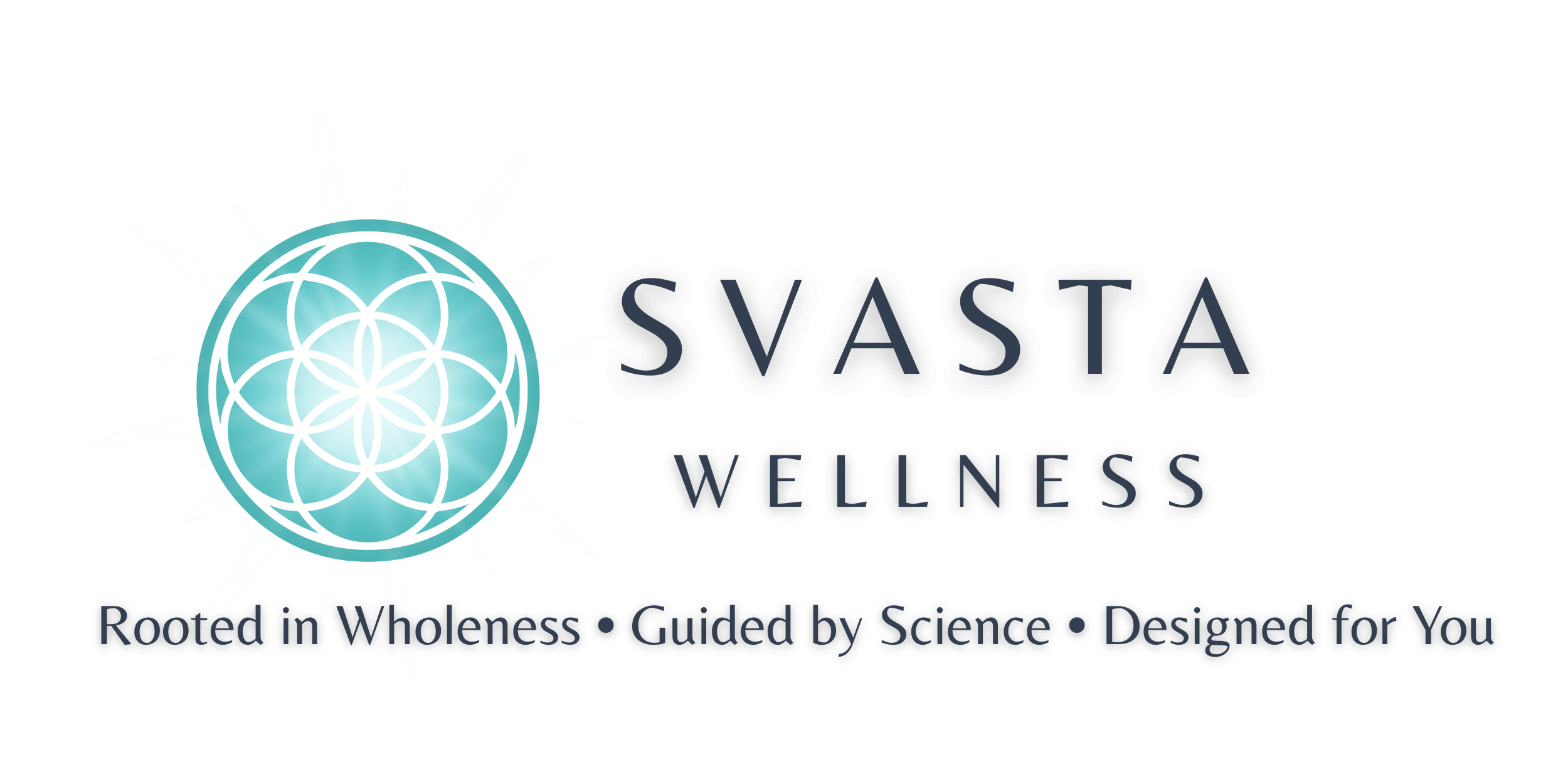
Infrared and red light therapy (RLT) have emerged as promising modalities to address a range of health challenges commonly experienced by women in midlife, and struggling with the common challenges of menopause. This guide offers an in-depth overview of how this therapy works, its benefits, best practices, and potential concerns for women in this life stage.
How Infrared and Red Light Therapy Works
Infrared and red light therapy use specific wavelengths of light to penetrate the skin and tissues, stimulating biological processes at a cellular level:
- Red Light Therapy (620–750 nm): Targets superficial tissues, improving skin health, reducing inflammation, and promoting collagen production.
- Near-Infrared Light (750–1400 nm): Penetrates deeper into tissues to support muscle recovery, reduce joint pain, and enhance mitochondrial function.
- Far-Infrared Light (>1400 nm): Generates gentle heat, improving circulation, detoxification, and relaxation.
The light photons are absorbed by chromophores within mitochondria, the energy powerhouses of cells, leading to increased production of adenosine triphosphate (ATP). This process enhances cellular repair, reduces oxidative stress, and improves tissue regeneration [1,2].
Benefits for Women in Midlife
1. Improved Bone Density
Menopausal women face increased risk of osteoporosis due to declining estrogen levels. Infrared therapy may help:
- Stimulating Osteoblast Activity: Infrared light promotes the activity of osteoblasts, the cells responsible for bone formation [3].
- Enhancing Circulation: Improved blood flow delivers essential nutrients to bone tissue.
- Reducing Inflammation: By lowering inflammation, infrared therapy creates a favorable environment for bone remodeling and strength.
2. Relief from Joint Pain and Stiffness
- Collagen Stimulation: Red light therapy supports collagen production, crucial for joint health and flexibility [4].
- Improved Circulation: Enhanced blood flow reduces inflammation and supports recovery of joint tissues.
- Endorphin Release: Infrared sauna sessions release endorphins, natural painkillers that alleviate joint discomfort.
3. Skin Health and Anti-Aging
- Collagen Boosting: Red light stimulates fibroblasts to produce collagen, reducing wrinkles and promoting skin elasticity [5].
- Improved Cellular Turnover: Increases in ATP production enhance skin regeneration, reducing signs of aging like dark spots and fine lines.
- Reduction in Inflammation: By calming inflammatory markers, red light therapy helps soothe conditions like rosacea and acne.
4. Stress Reduction and Nervous System Regulation
- Parasympathetic Activation: The warmth and gentle light encourage relaxation, shifting the body out of a fight-or-flight state.
- Cortisol Modulation: Regular sauna use has been shown to reduce chronic cortisol levels, supporting stress resilience [6].
- Improved Sleep Quality: The relaxation benefits can enhance sleep, vital for recovery and hormonal balance.
5. Enhanced Metabolic Function
- Improved Insulin Sensitivity: Infrared therapy can improve cellular glucose uptake, reducing risks of insulin resistance.
- Weight Management: The therapy enhances circulation and metabolic rate, aiding fat oxidation and calorie expenditure [7].
6. Muscle Recovery and Pain Relief
- Reduced Inflammation: Helps clear lactic acid buildup and reduce muscle soreness after workouts.
- Accelerated Recovery: Enhanced ATP production speeds up tissue repair, allowing quicker return to physical activity.
7. Cardiovascular Health
- Improved Circulation: Far-infrared light enhances blood vessel elasticity, supporting healthy blood pressure.
- Reduced Inflammation: Reduces oxidative stress linked to cardiovascular disease.
Best Practices
Frequency and Duration
- General Health Maintenance: 3–4 sessions per week, lasting 20–30 minutes each.
- Recovery from Stress or Injury: Up to 5 sessions per week, ensuring rest days for balance.
- Menopause-Specific Support: Start with 2–3 sessions weekly and gradually increase based on tolerance.
Timing
- Post-Workout Recovery: Using infrared after exercise can enhance muscle repair and reduce soreness.
- Evening Sessions: Promotes relaxation and better sleep quality.
Potential Concerns and Contraindications
Sympathetic Nervous System Activation
Women recovering from long-term stress or adrenal fatigue may initially experience heightened sympathetic activation. Start with shorter sessions (10–15 minutes) and gradually build up.
How to Reduce Sympathetic Arousal During Sauna Use
- Start with Gentle Exposure: Begin with lower heat and shorter durations (10–15 minutes) to avoid overstimulation.
- Incorporate Relaxation Techniques: Practice deep breathing or mindfulness meditation while in the sauna to promote parasympathetic activation.
- Time Your Sessions: Use the sauna in the evening or post-workout when your body is naturally winding down.
- Combine with Soothing Elements: Play calming music or use aromatherapy to enhance relaxation.
- Hydrate with Electrolytes: Drink mineral-rich water to support your body’s stress response and recovery.
- Pair with Gentle Cooling: After your session, allow your body to cool naturally, avoiding sudden temperature changes.
Hormonal Responses
- For women with cortisol dysregulation, moderate use is key. Overuse may strain the adrenal glands, particularly in post-menopausal women [8].
Medical Conditions
- Cardiovascular Concerns: Women with uncontrolled hypertension or cardiovascular issues should consult a healthcare provider before use.
- Photosensitivity: Those on medications causing light sensitivity should use with caution.
- Dehydration Risks: Always hydrate before and after sessions to support detoxification and avoid fatigue.
Recommendations for Women in Midlife
Integrating Therapy into Your Routine
- Combine with Exercise: Use infrared saunas post-workout to maximize recovery benefits. The exception would be workouts that create a lot of internal heat, such as an intense HIIT workout. Combining intense workouts with IF and RLT sauna use can lead to overheating.
- Pair with Stress Reduction Practices: Follow sauna sessions with yoga or meditation to amplify relaxation.
- Focus on Nutrition: Enhance results with nutrient-dense, anti-inflammatory foods like leafy greens, omega-3 fatty acids, and antioxidant-rich berries.
- Hydration: Drink mineralized water or herbal teas post-session to replenish electrolytes.
Monitoring Progress
Keep track of changes in:
- Energy levels
- Joint and muscle comfort
- Sleep quality
- Skin health
References
- Hamblin, M. R. (2016). Mechanisms of low-level light therapy. Photobiomodulation, Photomedicine, and Laser Surgery.
- Chung, H. et al. (2012). The nuts and bolts of low-level laser (light) therapy. Annals of Biomedical Engineering.
- Zhou, T. et al. (2017). Effects of near-infrared light on osteoblasts. Journal of Orthopaedic Research.
- Hopkins, J. T. et al. (2004). Infrared therapy for collagen enhancement. Journal of Athletic Training.
- Avci, P. et al. (2013). Low-level laser (light) therapy for skin rejuvenation. Seminars in Cutaneous Medicine and Surgery.
- Pilch, W. et al. (2013). The effect of infrared sauna on cortisol levels. Journal of Human Kinetics.
- Laukkanen, T. et al. (2018). Sauna bathing and reduced cardiovascular and all-cause mortality. Mayo Clinic Proceedings.
- Elenkov, I. J. et al. (2008). Stress hormone effects on immunity. Annals of the New York Academy of Sciences.

















0 Comments